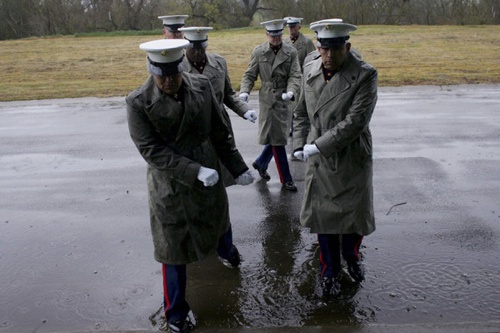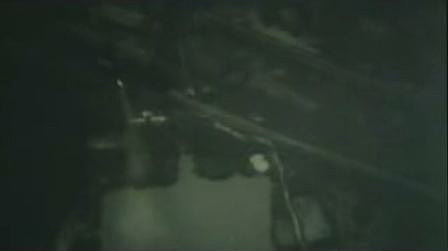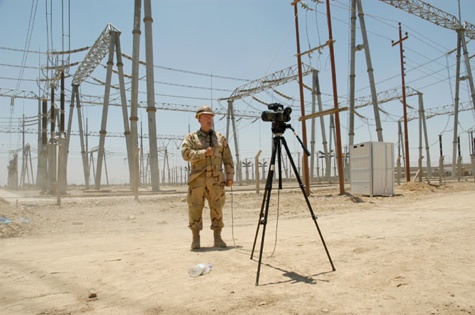Notes
Steps Without A Casket
Besides the fact I have never seen such an exercise, this image is telling for several reasons.
The casket that is not there reminds me of the way this war’s symbols and rituals of death have been relegated, in large part, to the imagination. What I’m also noticing lately, after a great deal of attention on wounded veterans, is how photojournalists seem to be giving more focus to funerals, grieving families, and the homes, rooms and articles of soldiers who have passed.
The author of this picture is Andrew Lichtenstein, a New York-based documentary photographer and former Open Society Institute Justice Fellow. He writes:
The picture is from the funeral of Bunny Long, a Cambodian American marine who was killed in Anbar province on March 10, 2006, and buried outside of Modesto, California on March 22nd, 2006.
The actual carrying of the casket in a military funeral is a very formal ritual. So much so, that many honor guards who have been assigned the task choose to practice at the graveside before the funeral party has arrived. But the “dry run” is not formal at all-that is, it is not a built in part of the military funeral ceremony, just a rehearsal.
I was able to make the photograph because I had been to plenty of funeral before this one, and saw on several occasions military honor guards practicing their steps without a casket. So it was a picture that I was aware of, in that I had seen it, but not found the right light, moment, or mood.
At the Long funeral, which was held at a veterans cemetery in Hughson, it was really raining. I am not someone who minds the rain, in fact I kind of like it. But this was a relentless, cold, downpour. I like the picture because it is something that I admire about the marines, or soldiers in general, or for that matter anyone with heart. Here they were dressed in their finest uniforms, and it did not stop them for one second from leaving the shelter of the funeral tent and walking in the rain, stepping in the puddles with their dress shoes. It seemed to sum up not only the sorrow of the occasion, but also the spirit.
I encourage you to view the slide show drawn from Andrew’s series “Never Coming Home.” It is edited and produced by BAGnewsNotes contributer Nina Berman, and is the first in a series hosted by the award winning progressive site, Alternet.
In the next couple of weeks, Nina and Alternet will offer additional photo essays by a number of world-class photographers including TIME photographer Christopher Morris presenting pictures from “My America,” inside the Bush bubble; Robert Capa Award winner Paolo Pellegrin from “Double Blind,” the war in Lebanon; and National Geographic photographer Lynn Johnson, who documents hate crimes across the U.S. Each will be accompanied by an interview with the photographer or co-author of the work. (Full disclosure: The BAG is a sponsor of the series.)
Given the parallels, I’d like to also mention a piece by North Carolina photographer Jeremy Lange. It’s not surprising to me that his photo essay, The Longest Road Home, is so complimentary to Andrew’s. In both cases, as I mention above, the de facto moratorium by the government over recognizing the funerals and memorial rites of Iraqi vets seems to have only spawned a greater desire to see for ourselves.
Never Coming Home photo essay here. To purchase in paperback.
(image: ©Andrew Lichtenstein. Modesto, CA. March 22, 2006. Used by permission)



Reactions
Comments Powered by Disqus